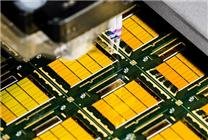DDR4 Memory Production Extended: Samsung and SK Hynix Adjust Strategies Amid Price Surge
Summary
- DDR4 Supply Adjustments: Samsung and SK Hynix are extending DDR4 memory production plans through 2026 due to rising demand and prices.
- Price Dynamics Shift: DDR4 prices have exceeded those of DDR5, prompting a reconsideration of production strategies among major manufacturers.
- Micron’s Stance: While Samsung and SK Hynix pivot their strategies, Micron remains committed to its original plans to phase out DDR4 production.
In a notable shift within the semiconductor industry, leading manufacturers Samsung and SK Hynix have decided to extend their production of DDR4 memory chips until 2026. This decision comes in response to an unexpected surge in demand and the escalating prices of DDR4 memory, which have recently eclipsed those of the newer DDR5 chips.
Initially, both companies had planned to halt shipments of DDR4 by the end of 2025 or early 2026. However, evolving market conditions have prompted a reassessment. Samsung has confirmed it will prolong DDR4 production, while SK Hynix is taking measures to boost output from its older Wuxi facility. This strategic pivot aims to maximize profit margins amid sweeping market changes.
Rising Price Dynamics
The shift in production strategies can be largely attributed to the significant price increase for DDR4 memory. According to market analytics from TrendForce, the price of DDR4 chips has dramatically risen since June 2023. Specifically, the price for a 16Gb DDR4 chip increased from $7.01 to $8.59 by the end of August, while the price for a comparable DDR5 chip rose from $5.85 to $6.17 in the same time frame. This growing disparity has led to a "price inversion," making DDR4 more economically attractive for producers at this juncture.
As a result of these conditions, both Samsung and SK Hynix are choosing to maintain their older production lines to capitalize on the lucrative profits associated with DDR4 sales. The decision was spurred by the need to respond to customer demands and stay competitive in a volatile marketplace.
Industry Implications
While Samsung and SK Hynix adapt their strategies to embrace the lucrative DDR4 market, Micron is remaining steadfast in its original plans. Unlike its competitors, Micron appears committed to phasing out DDR4 production, which could lead to missed opportunities in the current market landscape. The contrasting strategies among these major players underscore the dynamic nature of the semiconductor industry and the influence of supply-demand interactions on production decisions.
A Complex Landscape
The semiconductor market is continuously evolving, and these changes highlight the complexities involved in memory chip production. With the prices of various memory types fluctuating, manufacturers must stay agile and responsive to consumer trends. The decision to extend DDR4 production by Samsung and SK Hynix reflects a larger trend towards adapting to immediate market needs while balancing the long-term vision for next-generation memory technologies.
Market Outlook
Going forward, the interactions between DDR4 and DDR5 pricing will play a crucial role in guiding production strategies among memory manufacturers. As the landscape continues to develop, stakeholders will need to adapt to ensure they remain competitive. The contrast in how different companies respond to these market realities is likely to shape the future of memory technology.
In summary, as Samsung and SK Hynix seize the opportunity presented by the DDR4 price surge, the industry watches closely to see how Micron’s commitment to its original phase-out plans will affect its market positioning. The balancing act between production, pricing, and future technology will remain a critical focal point for players in the semiconductor industry.





